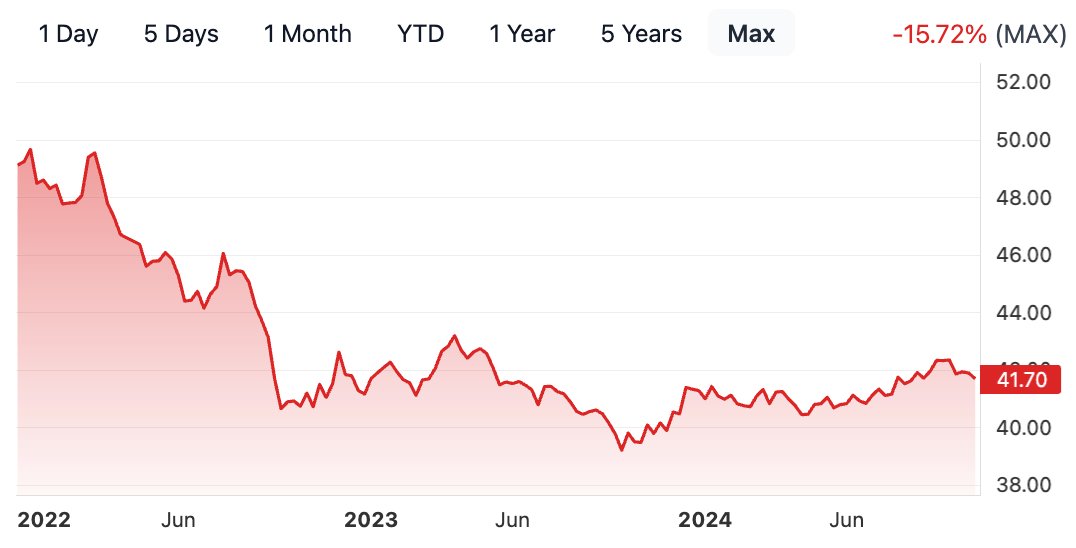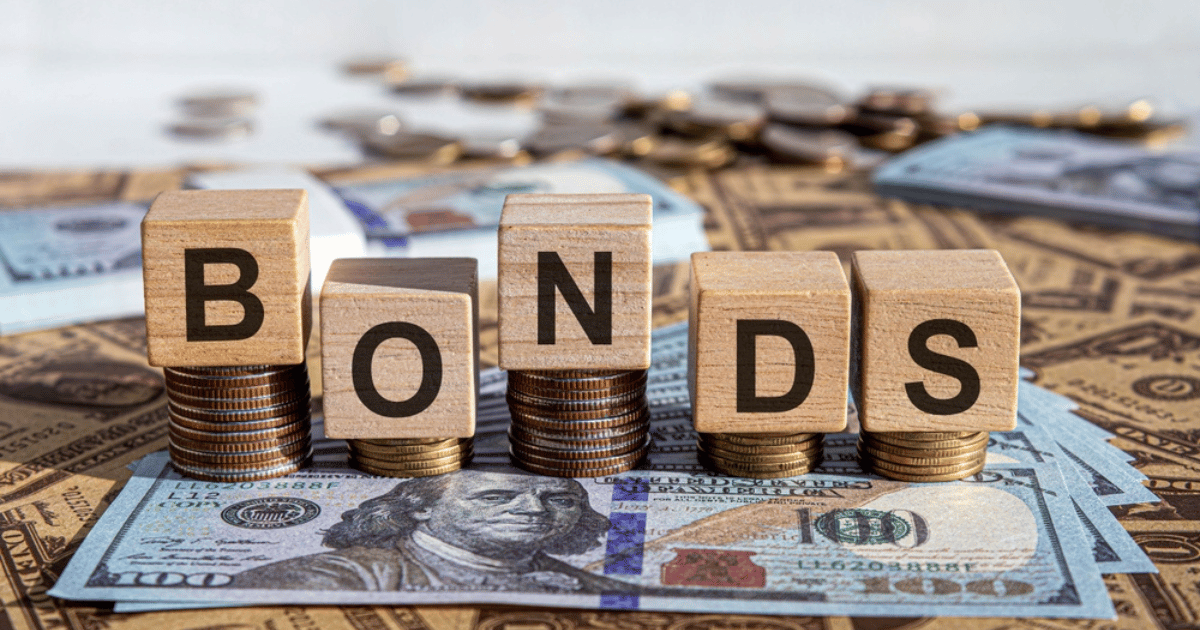Bonds vs Bond Funds: Which to Choose?

DFIP, a long-term inflation-protected bond fund, is down -15.72% since the end of 2021:

So much for bonds being safe, right?
Because of charts like this, many financial advisors and investors prefer owning individual bonds rather than bond funds.
Their argument goes something like this: “You should own bonds directly, not bond funds, because bond funds can fall in value, but you can always hold a bond to maturity and get your money back.”
What they're saying isn't wrong, but it's also not right. After all, if this were the case, why would anyone own bond funds?
In this article, we'll examine this question in detail, looking at the pros and cons of both bonds and bond funds, as well as how they compare.
How bonds and bond funds work
The truth is that the above argument is a misconception.
Remember — similar to how mutual funds are portfolios of individual stocks — bond funds are simply portfolios of individual bonds.
They can't perform any differently than the sum of what they own.
Pricing
Bonds and bond funds give the illusion of being different because of their pricing:
- Bond funds show NPV* and interest rates. Bond funds are marked to market every day. Their price movements (gains and losses) are explicit and show in your portfolio in real time.
- Individual bonds show face value and coupon rates.* Individual bonds do not show price movements in your portfolio (unless you look up the bond's quote in the secondary market). Most investors don't do this unless they want to sell the bond, so they never see gains or losses on their individual bond positions.
*NPV and coupon rates
NPVNet present value (NPV) calculates the current value of future cash flows from a bond, discounted at a specific rate (usually the market interest rate). A positive NPV indicates the bond may be undervalued, while a negative NPV suggests it could be overvalued.
Coupon ratesCoupon rates refer to the annual interest rate paid by the bond issuer on the bond's face value. This rate determines the fixed interest payments that bondholders receive until the bond matures.
Example
Here's an example.
Let's say investor A buys a 10-year bond with a $1,000 face value and a $50 annual coupon. The duration is 8.1 years. On the same day, Investor B puts $1,000 in an 8.1-year-duration bond fund, which holds bonds of equivalent risk.
The next day, interest rates increase to 10%.
Nothing explicitly changes for Investor A. The bond still shows a face value of $1,000, though he could now only sell it for $692.77. He can hold the bond to maturity and receive $50 payments in years 1–9 and a $1,050 payment at the end of year 10.
Meanwhile, the bond fund was marked to market. Investor B is now holding $692.77 in his bond fund and showing a loss of $307.23, but the fund is now yielding 10%.
Assuming rates remain unchanged and both investors spend $50 a year of income, they will both have $1,050 in year 10.
So, what's the difference?
Implicit vs explicit losses
The losses are explicit with the bond fund and implicit with the individual bonds, but your total (coupon + price return) real (inflation-adjusted) return would be the same in either scenario.
This has to be true since the bond fund is made up of the individual bonds themselves.
Holding an individual bond until maturity can't turn a bad investment into a good one.
If you bought a 10-year bond that paid 5% interest before rates went up and held it to maturity, you would avoid seeing a loss on the principal but you'd earn below-market returns.
If you purchased a bond fund, you would see the loss on the principal but would be earning market returns.
Net-net, there is no difference.
Maturity
Proponents of buying individual bonds also say that another downside of bond funds is that they don't mature, while individual bonds do.
That's true. However, that's only true for individual bonds, not the portfolio of individual bonds an investor typically owns.
Investors in individual bonds usually reinvest the proceeds of maturing bonds in new bonds, often through the use of a “laddered” portfolio.
In other words, their portfolio of individual bonds, each of which individually will eventually mature, never itself matures — precisely like bond funds.
So, should you buy individual bonds or shares of bond funds?
There are pros and cons to each.
Pros and cons of bonds
Here's a summary overviewing the pros and cons of owning bonds.
Pros
- Predictability: When buying an individual bond, you lock in a fixed interest rate and know the exact yield to maturity (YTM). This allows you to plan for and control the timing and amount of your investment income.
- Customizability: You can build a custom portfolio of bonds based on income thresholds, maturity requirements, types of businesses, or any other factor.
- Predictable value at maturity: Assuming the bond isn't callable, you will receive the par value of the bond at maturity (barring default).
Cons
- High capital requirements: Most bonds can only be purchased in $1,000 increments. You will need a certain amount of capital to achieve proper levels of diversification, which may be prohibitive for some investors.
- Time: You will likely spend a few hours per month researching, constructing, and managing an individual bond portfolio.
Pros and cons of bond funds
And here's a brief overview of the pros and cons of owning bonds.
Pros
- Diversification: The primary benefit of owning a bond fund is instant diversification to a range of bonds across various issuers, sectors, and maturity dates. Additionally, bond funds can have investment minimums as low as $1, making diversification simple even for small accounts. This also makes bond funds easier to tax-loss harvest.
- Monthly income: Most bond funds pay a monthly dividend, which many investors prefer to the semiannual payments of individual bonds.
- Minimal maintenance: Since bond funds have managers who decide which bonds to invest in to maintain their target durations and diversification, there is almost zero ongoing maintenance work for investors.
Cons
- NPV fluctuations: As interest rates rise and fall, the NPVs of bond funds move accordingly. It's uncertain where the NPV will be in the future.
- Tax consequences: Fund managers buy and sell bonds throughout the year, which can lead to capital gains distributions at the end of the year. These distributions are almost impossible to plan for from a tax standpoint.
Bonds vs bond funds
Here are some other differences between bonds and bond funds:
| Individual bonds | Bond funds | |
| Minimum investment | Higher | Lower |
| Diversification | Harder to achieve | Easier to achieve |
| Customization | Yes | No |
| Complexity / time required | Higher | Lower |
| Income frequency | Typically semiannually | Typically monthly |
| Fees / costs | Commissions when bought and sold | Ongoing management fees |
| Predictable market value at maturity | Yes (barring default) | No |
| Option for automatic coupon reinvestment | No | Yes |
The question of investing in bonds or bond funds really comes down to personal preference: which set of characteristics do you value more?
Final word
Before you make your decision, remember that you don't live life in a spreadsheet.
While your total real return will be the same with either individual bonds or bond funds, the way you experience those returns will be quite different.
As investors, we tend not to notice the effects of inflation and higher interest rates as much as the sharp pain when our investments lose money. This is especially true about the “stable” portion of our portfolios.
If seeing the NPV of your bond fund fluctuate makes you uncomfortable, bond funds may not be right for you.
As long as you don't mind the extra work of managing them (building ladders and maintaining diversification) and have enough money to invest, individual bonds may be the right choice.
If you're like me, it may help you sleep better at night.






